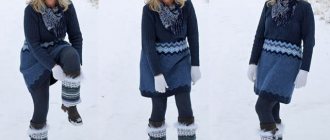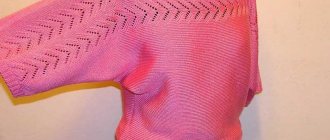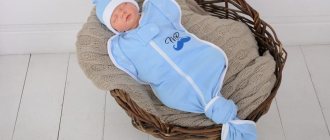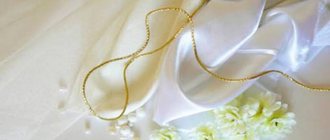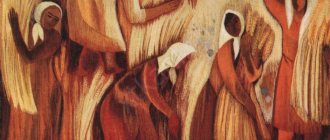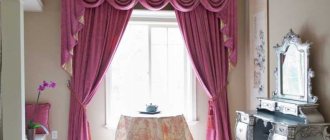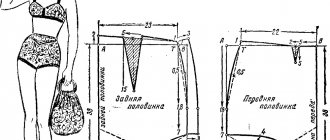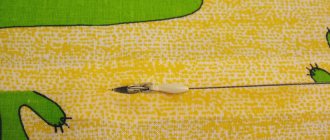Types of upholstery materials
Conventionally, fabric for chairs is divided into several categories. The first can be used as furniture finishing in the hallway, bedroom, living room or office. The second is relevant for the kitchen and dining area.
The principle of upholstery of chairs
Additional Information! You need to pay attention not only to visual nuances, but also to the quality and strength of the material.
Additionally, you need to take into account the design of the room, the functional purpose of the room, and the color scheme of the space. If you take into account all the nuances, you will be able to choose textiles quickly and efficiently.
Kitchen
In the kitchen, chairs are not distinguished by their functionality, so upholstery is much easier. But the surface of kitchen furniture is hard, constantly gets dirty and is constantly exposed to mechanical stress, so the following requirements are imposed on textiles:
- The base must be very strong.
- The product must withstand significant mechanical stress.
- The texture must be durable so as not to wrinkle or deform during use.
- Textiles should not absorb moisture, not burn and can be easily cleaned at the first need.
Chairs in the kitchen
Considering all the requirements for textiles for kitchen chairs, one conclusion suggests itself - dense synthetics would be the ideal option. Synthetic fibers will withstand constant humidity, dry cleaning, and constant mechanical stress.
Dining room, living room and office
The dining room, living room and study are rooms that are often visited by guests and family members. In accordance with this feature, the fabric for the chair or chair is selected:
- The fabric should not be peeled - pellets can significantly deteriorate the appearance of the furniture.
- It is undesirable to choose fabrics that wrinkle after slight mechanical impact.
- The appearance should fit into the overall design concept and be attractive.
- The fabric should be easy to clean and not deteriorate from exposure to household chemicals.
You might be interested in what fabrics are used to create outdoor curtains
Living room chairs
Usually, covers are made from light fabric, since rooms of this type are made in soothing pastel colors. To prevent textiles from deteriorating during the washing process, they are treated with Teflon. It repels dirt and odors.
Selection of materials
It is important to take into account the density of the fabric; it should hold its shape well. And easy to clean. The most commonly used are tapestry, flock, chenille, and jacquard. They are quite strong compared to other fabrics. The list of materials also includes leather and leatherette.
It is important to take correct measurements before purchasing. Don't forget to take into account the width of the hem and the height of the filler, this is approximately plus 15-20 cm to the original length of the fabric.
The color of the upholstery plays a big role. It should fit harmoniously into the interior. Dark colors are considered more practical, while light upholstery is more demanding to maintain. You can combine different materials in color and texture.
Most popular upholstery fabrics
Fabric for upholstery of chairs, which one is better is difficult to determine right away. There are a lot of options, each of which is distinguished by the originality of the external plan and the properties of wear resistance and moisture resistance.
Chenille
Chenille means "caterpillar" in French. The fabric received this name because of its unusual appearance - the fibers are tightly twisted, with additional fibers woven into them. The canvas turns out textured and looks very rich.
You can cover chairs with fabric of this quality in the kitchen and living room, since the composition contains synthetic and natural fibers in varying proportions. Additional advantages of the fabric are:
- Long-lasting color that does not wash out or fade in the sun.
- The texture is soft, elastic, pliable and easy to work with.
- Thanks to its composition and density, it retains its attractive appearance for a long time.
Chenille for upholstery
There is also a drawback - chenille strongly absorbs moisture and liquid, and takes a long time to dry.
Jacquard
Jacquard is a relatively inexpensive material that has many advantages:
- The fiber weave is dense.
- The fabric contains synthetic and natural fibers.
- Textiles do not deform, do not fade in the sun, and do not wear out over a long period of time.
Note! Jacquard is a premium fabric. Especially if the composition includes a lot of natural raw materials.
Jacquard for furniture
Jacquard is easy to clean from dirt, so it is considered a fairly hygienic textile. Unfortunately, it is difficult to choose truly high-quality material.
Thermo-Jacquard
A “beginner” market absorber of fabrics for arranging the surfaces of diverse furniture. Material Features:
- Does not absorb moisture.
- Easy to clean from dirt;
- Can be used for a long time.
A unique pattern that is applied in several layers, creating unique visual effects.
Scotchgard
Special impregnation for various types of textiles. Thanks to this protective layer, the fabric does not absorb moisture and greasy substances. This type of layer is relevant on fabrics that will cover furniture in the kitchen or in the kitchen.
Flock
Flock is an ideal option for a home with children. The fabric is easy to clean even from difficult types of dirt. At the same time, the pattern is made simply, since the fibers do not crumble on the cuts.
Flock to update
A short soft pile is glued to the sweaty fabric, which gives the appearance of the flock an aesthetic appeal. You cannot clean flock with products that contain solvent, bleach, or chlorine—the fluff will come off.
You may be interested in this Tips on what fabric to choose for a tablecloth
Velours
Velor chairs have several properties:
- The soft texture of the material does not crush after use.
- Huge variety of prints and colors.
- An inexpensive option for an aristocratic type of upholstery for furniture.
The disadvantage is the rapid loss of lint, which then remains on the clothes. Do not use many cleaning products as the textiles may fade.
Microfiber
Microfiber is considered a new generation textile. This type of furniture finishing is used due to its resistance to mechanical stress of varying degrees. In this case, weaving is carried out by combining ultra-thin threads of synthetic origin. Ideally combined with natural expensive materials.
Microfiber for furniture finishing
Alcantara
Chair upholstery made of Alcantara is becoming more and more common, since the material is an artificial analogue of suede. At the same time, the material is more effective:
- Keeps warm in winter, does not heat up in summer.
- Maintains an attractive appearance for a long time.
- Affordable price.
- Various colors.
If you go online, you can find a lot of designer furniture that is upholstered with Alcantara.
Arpatek
Arpatek is the highest quality leather substitute, which displaces many other textile analogues. There are many varieties of arpatek: python, varnish, crocodile and so on. You can choose the right option for any interior. Additional features:
- hypoallergenic;
- strength;
- low cost;
- does not get dirty.
Arpatek for furniture
If you upholster a chair with Arpatek, it will immediately make the furniture more elegant. An ideal option for a high-tech interior.
Tapestry
Tapestry is an ideal upholstery material that is produced on the same principle as jacquard. But the weaving fiber contains a larger number of threads. The textiles are the most natural in composition, although acrylic threads are woven into the fabric to increase density. Sometimes you can find round weaving.
Gozhka
Matting is a good analogue of chenille. Covering with matting is most often done, since the material has a lot of positive properties:
- The weave is coarse and large compared to chenille.
- Usually 2 types of fibers of similar shade are intertwined in a checkerboard pattern.
- Does not absorb odor and does not fade in the sun.
- You can clean the surface with a vacuum cleaner or soapy water - dirt does not eat into the threads.
Chair matting
Recreates the effect of a natural surface, therefore it is often used to decorate furniture that will be part of an eco-style interior. It is not advisable to upholster chairs in a house where there are cats - pets love to sharpen their claws on such textured fabric.
You may be interested in How to choose upholstery fabric for upholstered furniture
Velveteen
The corduroy finish looks aristocratic and expensive. The fabric is soft to the touch with a variety of rib types. The color scheme is different, and various prints are often found. It retains its original appearance for a long time, but reupholstering such material involves a lot of inconvenience - small debris clings to the pile, it is difficult to clean from dirt, and dust quickly accumulates.
Artificial and natural leather
Leatherette and genuine leather are the most popular options for transforming furniture. There are many analogues of genuine leather that are of good quality and attractive appearance.
Leather for upholstery
Selecting cases by style
The features of choosing the product described, taking into account the shape of the cut and the material for its manufacture, were described above. It remains to tell you how important it is to be able to select a style taking into account the style of kitchen design.
Related article: Ideas for the interior of a small kitchen 4-8 sq.m. (26 photos)
- For country style, for example, or for Provence, cotton covers made from colorful fabric in a soft pastel palette are ideal. In this case, it is better to sew capes straight, of a simple shape without drapery.
- For the boho style, experts recommend choosing chair covers made from rough burlap. This fabric looks perfect against the backdrop of natural wood, which is actively used to recreate the eco trend.
- Anyone who loves the classics can choose covers of any shape, those made from noble fabrics (organza, brocade, crepe-satin). Such capes will once again emphasize the atmosphere of aristocracy.
- Modern styles (high-tech, minimalism) also allow the use of the described decorative elements. The main thing here is to minimize the use of any decorations. Covers should be sewn simply, concisely, from simple plain fabrics. You can use material with a metallic sheen.
Note! Chair covers in the kitchen for everyday use and for special occasions should be different from each other. For the first case, experts recommend using a straight cut, but leaving ruffles, draperies, bows, ties, and satin ribbons for sewing festive capes. In any case, the color of the material must necessarily coincide with the color of the tablecloth or textile window decoration. Products made from fabrics in calm colors look beautiful. They will not be perceived as boring if bright details are added to the table setting and the arrangement of additional accessories (napkins, dishes).
DIY chair covers made of fabric
In order not to constantly return to changing the upholstery, it is worth making special covers for chairs. First you need to choose the right fabric for your chair covers. The material should fit into the interior, be easy to wash, and be of good quality.
Next, you should choose a sketch of the product. There are a lot of complex options, but there are also simple manufacturing instructions. Do-it-yourself chair covers made of fabric for beginners are made in accordance with the following algorithm:
- Take measurements from furniture. It is important to measure the length from the middle of the front legs to the middle of the back legs across the entire body. It is important to take into account all curves. Determine the width of the back and seat.
- Make a pattern. The result is one piece - a wide strip of fabric.
- Finish the edges of the cut.
- Place the workpiece on a chair. Sew the tape on both sides in the place where the bend is formed from the back to the seat. Tie a ribbon behind the back.
A simple cover for a chair
Such a cover can become the basis for a children's version of the product - just make an applique of the muzzle or sew on beads and buttons. You can make the cape soft by making a lining, which in turn is stuffed with synthetic padding or foam rubber.
Tips for those who want to try sewing covers with their own hands
An experienced craftsman knows how much fabric may be needed to sew one cover for one chair in the kitchen, how to cut the product described, how to sew it. A beginner, faced with such problems, rushes to carefully study the advice of professionals. They help avoid the most common mistakes.
So, for one cover you need to purchase one and a half or two meters, depending on the chosen model. There is no need to purchase expensive fabric for daily use, the main thing is that the material is durable.
Making a pattern
In order to make a pattern for a cover, you must first decide on the shape of the cape, its style, and only then take measurements from the chair and make a dummy from paper based on them. The task is simplified if you have seamstress skills; if you don’t have them, you need to arm yourself with scissors, thin paper and tape. Using them, a dummy of the future pattern is made as follows: We wrap the parts of the chair with paper (the front back, seat, and with paper around the legs we form the underskirt of the future cover). The paper is attached to the chair with tape. Then the paper cover is cut out with scissors.
The described cutting method makes it quite easy to create precise patterns; with them you can already cut out the details of a future cape from fabric. It is important to lay out the pattern correctly and make seam and hem allowances on the fabric. If you can lay out the pattern on the fabric in such a way that there are as few gaps as possible between adjacent parts, the fabric consumption will be economical.
Note! The pattern pieces are placed in the direction of the grain thread.
Preliminary work
Of course, many will say that you shouldn’t go through the trouble of making the pattern yourself. You can always turn to the Internet for help and find ready-made patterns there. But, as practice shows, it is difficult to find standard universal solutions in our time. Each chair has its own configuration, so it’s easy to make a mistake in this matter.
Related article: What to do if the washing machine jumps during the spin cycle?
Without a doubt, ready-made patterns can simplify the task if you take them as a basis and use tracing paper to cut out your own patterns. Experts recommend that all novice needlewomen act in the following direction:
- Using tracing paper and ready-made patterns, try to make a precisely fitted pattern for one specific chair.
- Buy inexpensive fabric and practice both cutting and sewing the chosen model on it. There are always old sheets, curtains, and unnecessary bedspreads at hand. Let it become an experimental sample.
- Before stitching, it is useful to first make adjustments by hand and try on the sewn parts directly on the chair. You only need to stitch when the cover fits on the stool as if cast.
After this, if you like the experience and its results, you can go to the store and purchase the fabric you like for sewing the final version.
How to connect parts?
Sewing chair covers has its own characteristics. The fact is that only part of the cut parts are sewn together. The rest are not stitched, but remain unsewn. This tailoring allows you to then put the product on the described piece of furniture.
All edges of unsewn elements must be processed with an overlocker. If you don’t have it at hand, then you can simply make a zigzag stitch along the edges. It will help protect the edges of the fabric from fraying. It’s easy to find thick fabrics on sale, the edges of which do not need to be processed when sewing. It will be easier and faster to work with them.
Straight covers will fit snugly on the chair if you sew a zipper into the side seams.
When sewing simple capes, it is important to think in advance about how to attach them to a piece of furniture. The fastening should be such that the cape does not bunch up on the seat later.
If you are sewing separate capes for the seat or for the back of the chair, it is better to sew an elastic band around the perimeter of the part, or skip the braid. Such elements provide the most reliable fastening of the case. The presence of elastic means that you need to add a few centimeters to the hems.
How to cover a chair with dermantine
It is often necessary to change the upholstery on chairs. To do this, you must first disassemble the chair. Clean parts from old upholstery. If necessary, replace the soft filling. Next is how to cover a chair with dermantine:
- Attach the seat to the dermantine piece. Trace the shape with room for folding.
- Cut out the part. Pin the pattern to the bottom of the piece using a construction stapler.
- Repeat with the back too.
Upholstering the chair seat with dermantine
You can also restore the stool.
Over time, the appearance of upholstered furniture, in particular chairs, becomes unattractive. Often the problem concerns damage to the upholstery. You can replace the old coating without any problems and with special equipment. It is important to choose the right fabric for this. Protective covers can be created from this material by sewing.
